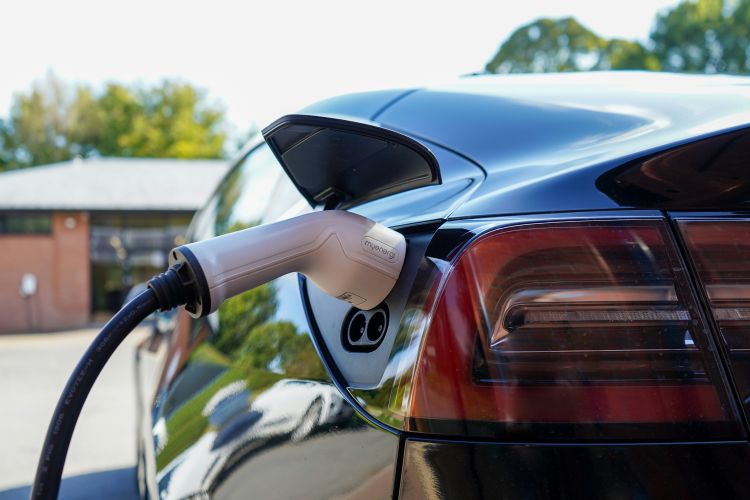
The government’s plan to roll out a new scheme for EVs has been dampened by delays in finalising guidelines and lacklustre response from automakers, particularly Tesla. The policy guidelines for the Scheme to Promote Manufacturing of Electric Passenger Cars in India are now expected by September.
This new scheme, intended to compensate for the absence of FAME III, aims to encourage vehicle manufacturers to produce EVs in India. The scheme includes provisions for reduced customs duties on imported cars if companies commit to investing in India. Interested car makers can avail of a reduced import duty of 15% (down from 70% or 100%) on vehicles with a CIF (cost, insurance, and freight) value of $35,000 (Rs 29 lakh) and above for five years from the date of the approval letter issued by the government.
READ | Funding freeze for MFIs: High time micro lenders changed their playbook
Furthermore, all original equipment manufacturers (OEMs) will qualify for reduced import duty on certain electric vehicles if they invest at least $500 million (Rs 4,150 crore) and establish a manufacturing plant within three years. The policy, which aims to accelerate local manufacturing of high-end electric cars, currently supports only fresh investments, which has been a major sore point for automakers. India may tweak this policy to attract automakers that have already made investments in the country.
Foreign EV makers will wait and watch
The government’s plan is contingent upon enthusiastic participation from foreign EV manufacturers like Tesla and Chinese giant BYD, as they do not have manufacturing plants in India, unlike many other global players such as VinFast, Kia, Škoda, BMW, and Mercedes-Benz. Tesla has not commented on its participation in the scheme. Besides Elon Musk’s Tesla, Vietnam-based EV player VinFast has expressed scepticism and, in April, aired concerns about the scheme, advocating for its prior investment in India to qualify for incentives. Mobile phone major Xiaomi has also confirmed that it will not enter the Indian EV market, with its President of Xiaomi India stating that the company will focus on the Chinese market for the next three years.
Since the government is yet to finalise the scheme provisions, the portal for OEMs to submit applications will open only after the guidelines are released, which will take around two more months. The notification for the scheme was initially issued on March 15, 2024. While the government claims the delay is due to Budget and Elections 2024, industry insiders attribute it to a lukewarm response from automakers. Until the government secures participation, especially from Tesla, it will not release the guidelines.
Incentives to EV manufacturing
With its new policy, the government has taken significant steps to incentivise carmakers. The decision to reduce the import duty on fully-built electric vehicles from 70% to 15% signals its sincere intention to attract major players. This move marks a step back from the initial push for Atmanirbhar Bharat, which encouraged domestic manufacturing by keeping import duties high on several goods. The new policy reflects the government’s openness to foreign players, provided they adhere to the rules. However, the government is keen to have one of the world’s largest electric vehicles manufacturers, Tesla, on board before rolling out the final policy.
The new EV policy comes at a time when countries are trying to mitigate extreme weather events and meet their climate goals. India has set ambitious goals for 2030 in the short term and 2070 in the long term, including reducing the emissions intensity of its GDP by 45% by 2030 and achieving net-zero emissions by 2070.
The new scheme is expected to shake up the Indian market by creating a wider variety of EV options for consumers. This will encourage domestic manufacturers, who have been cautious, to actively participate in the electric vehicles space. The policy also pressures traditional carmakers reliant on internal combustion engines (ICEs) to develop concrete EV plans. While competition may intensify in the luxury segment (above Rs 30 lakh), Indian manufacturers can still maintain a competitive edge in the more affordable market segment (below Rs 30 lakh).
India’s electric vehicle sector still faces significant challenges. Reliance on imported batteries and components inflates industry costs and makes it vulnerable to global fluctuations. This, coupled with limited driving range, few vehicle options, unreliable power grids, and a lack of charging infrastructure, keeps electric vehicles nearly double the price of traditional cars. Safety concerns due to battery fires further dampen consumer confidence.
To achieve the ambitious 30% EV sales target by 2030, India needs a massive push in public charging infrastructure (5.6-5.8 million units) powered by renewable energy sources, potentially including on-site power generation.
